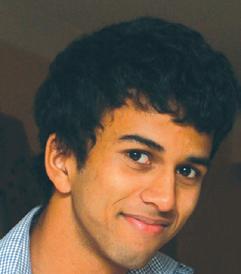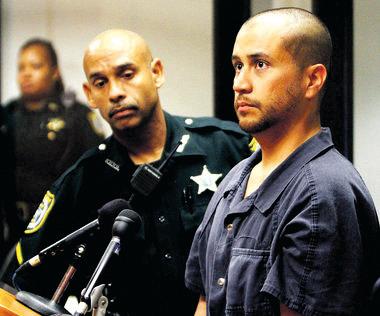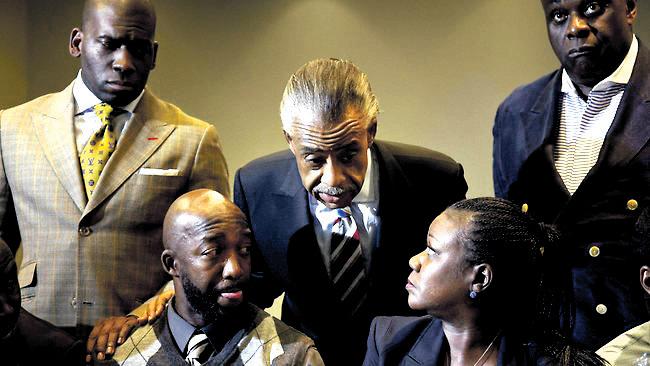
4 minute read
Justice versus judiciary
from 2012-04 Sydney (2)
by Indian Link
When the perpetrator in an avoidable crime can be shielded through the law, it’s time to review the system
By RITAM MITRA
Equality before the law can often be the difference between a satisfied society and a discontent one.
Factors such as race, gender and sexual orientation should be neither here nor there when it comes to determining truth and administering justice. We only need to look at what happens when politics, for example, plays a role in the judicial system, such as Zimbabwe and Iran. So it is a definite concern when the United States, the world’s most powerful democracy, has in recent times, twice reminded us that there is still an underlying black/white tension prevalent amongst its civilians.
Late last year, the case of Troy Davis gave everyone a gentle reminder of how archaic the death penalty can often be. Millions worldwide pleaded for clemency, yet Davis was executed for the murder of a policeman in Georgia, even after being granted three last-minute stays. There were widespread protests at the lack of forensic evidence linking him to the crime, as supporters adopted the slogan ‘I am Troy Davis’. Now there is a worryingly familiar, yet similarly unwanted phrase being repeated worldwide.
‘I am Trayvon Martin’. Like Davis, the facts of this case are in dispute – and when facts are disputed, conflict is inherent.
The generally agreed version of events is as follows: On February 26, 2012, George Zimmerman, a 28-year old Hispanic American neighbourhood watch coordinator contacted the Sanford Police Department to report a young man, who would later be revealed as Martin, engaging in suspicious behaviour. The audio from the 911 call shows that Zimmerman believed Martin looked like he was under the influence of drugs and believed that Martin was “up to no good, just walking around looking about.” The dispatcher told Zimmerman not to follow Martin, and Zimmerman affirms this with an “OK.”


What happened next is as of yet disputed, but what eventually took place will never be forgotten – Zimmerman fired one fatal shot into Martin’s chest, and claimed it was in self-defence.
Under Florida’s controversial ‘Stand Your Ground’ law, a person is entitled to use lethal force in a public place to defend themselves without a duty to retreat, if there is reasonable belief of a threat to their person. This differs from most other US States, where this provision only extends to those actions taken inside one’s own home.
Australian jurisdictions also use self-defence as a complete defence to the criminal offences of manslaughter and murder –the difference however, lies in the fact that the Stand Your Ground law allows immunity before the law, not just a defence - and thus Zimmerman was not even arrested, let alone charged with murder, whereas in Australia he would have at least been brought to a trial.
To me the issue is quite clear, even without venturing into the hysteria that surrounds Zimmerman’s failed attempts to join the police force, his ridiculous amounts of calls to the police in the past year, the fact that Martin was only 16 and holding a packet of Skittles and a Lipton Iced Tea. Zimmerman has admitted to following Martin. Indeed, in his version of events, he says he continued to follow Martin at length, and stopped when confronted by him. Zimmerman fired the gun once Martin was on top of him, beating him, and claimed his head was being smashed into the pavement. Footage taken of Zimmerman just moments later, as he was brought into the police station, showed no serious signs of any abrasions or bruises – at least not to the degree that might have been expected. Meanwhile, claims that Martin broke Zimmerman’s nose have, as of yet, been unsubstantiated.
If you are following someone, it should be a natural progression of thought that you are the aggressor. The moment the police warned Zimmerman not to follow Martin and he chose not to heed this advice, the distinction was made between an innocent good Samaritan and an ignorant vigilante.
For one second, imagine that you have noticed a suspiciouslooking young boy. He is not doing anything overtly untoward, and he is not even near your home. He’s just, quite simply, there. Yet, you follow him in your car, in complete awareness that if he is as dangerous as you think he is, your only method of selfdefence is a gun, which you would ideally, of course, not use. If he is not that dangerous, then you have no reason to be following him at all. He finally realises you are following him, and confronts you. Instead of apologising and attempting to retreat from a potentially tricky situation, telephone transcripts show that you say, “What are you doing here?” A fight ensues, you’re on the floor, and you decide to fire the gun knowing very well that at that proximity you will be ending a life, and knowing further that you are in a public place and there is every chance that someone would have come along in a minute to alleviate the situation anyway.
Indeed, no less than eight 911 calls were received in relation to the disturbance. Some allege that Martin was the one crying out for help, while others maintain it was Zimmerman. Those facts, though, are neither here nor there.
If you are searching for trouble, more often than not, you will be rewarded with it.
However, it becomes farcical to say that those searching for trouble should be granted immunity from the law purely because the trouble they sought was too much for them to handle.

Let us even ignore the race issues that have come to the fore over this. Yes, neighbourhood watch is a fantastic concept and it can bring communities together. But in this instance, it has torn a family and a society apart. It seems like paranoia can now be a crime in itself.
The moment the police warned Zimmerman not to follow Martin and he chose not to heed this advice, the distinction was made between an innocent good Samaritan and an ignorant vigilante.
Contact Details:

Amrit P Jagota (MARN 0532014)
Mobile Contact Number 0414 338 423
Manvinder K Josan (MARN 0962796)
Mobile Contact Number 0410 719 375
Suite 4, Level 1, Murray Arcade 127-133 Burwood Road, Burwood NSW 2134
Phone: (02) 9747 6071 Fax (02) 9747 4031










